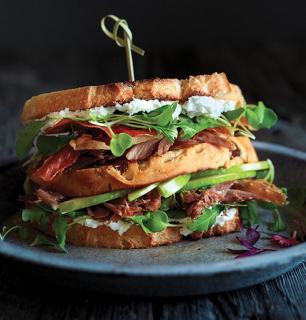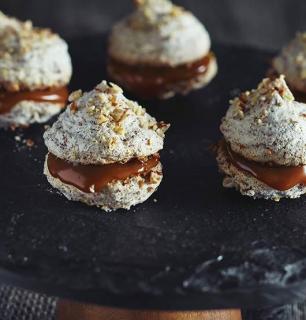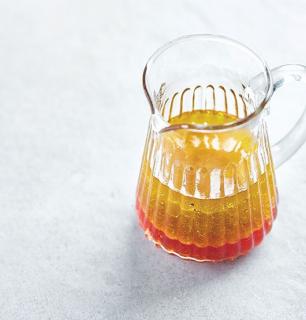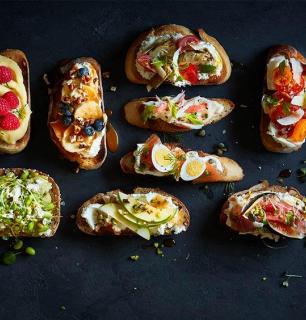the celebrated jambon-beurre — A sandwich by any other name
I’m standing in front of a display case of pre-packaged hams. I’m bombarded by labels, colours, so many words! The labels point out subtle differences in their products that leave me paralyzed with doubt. Where does ham come from? How is it cooked? What ingredients should I worry about? And, ultimately, what do I really know about ham?
Bread, ham, butter. A jambon-beurre, that quintessentially Parisian sandwich, may seem simple. But there’s no dressing, sauce or melted butter to disguise wilting meat or subpar bread. The mythical jambon-beurre brooks no compromise – whether in the quality of the ingredients or in the balance of its proportions. Here is the anatomy of this glorious sandwich. Origins The jambon-beurre, also called the Parisien, became popular in the late 19th century thanks to workers in the Les Halles market in Paris. The 1920s were the glory years of the baguette. It was touted as a modern bread, easy to cut into and carry, and its refined flour was a luxurious departure from rustic country loaves. The aristocracy was sold. Assembly The gold standard of the jambon-beurre, as any aficionado will tell you, is a traditional half baguette, slathered on both sides with raw butter and topped with about 100 grams of high-quality ham. Crisp, rich, fresh: perfect. The bread With its milky crumb and crisp crust, a fresh-baked baguette sliced lengthwise is the only bread for a jambon-beurre. It’s the backbone of the sandwich. The butter Both halves of the baguette must be spread with real, semi-salted butter. The possible terroir options suggest that butter made from milk mixed from a dozen different countries is best avoided. Guérande salt, Himalayan pink, or white gold from the island of Noirmoutier? To each their own. The ham The white meat from the back section of the pig rather than the shoulder makes the best slice. Poached in a flavoured vegetable broth, this high-end ham is also the key ingredient in croque monsieurs and endives au gratin. And there’s no need to ask for extra lean, since this cut is among the least fatty – about the same as roasted turkey breast. The ham should be sliced not too thin and not too thick, and draped loosely on the bread. Use at least 120 grams per serving. Adornments Switching to sweet butter alone is a crime against tradition, but that doesn’t stop pioneering souls from using truffle ham or even – gasp! – sliced country bread. A shiso leaf, yuzu butter, rosemary mustard, pickles or avocado are all fancy additions, but, ultimately, the jambon-beurre needs no trimmings.
Our recipes
See all recipes




